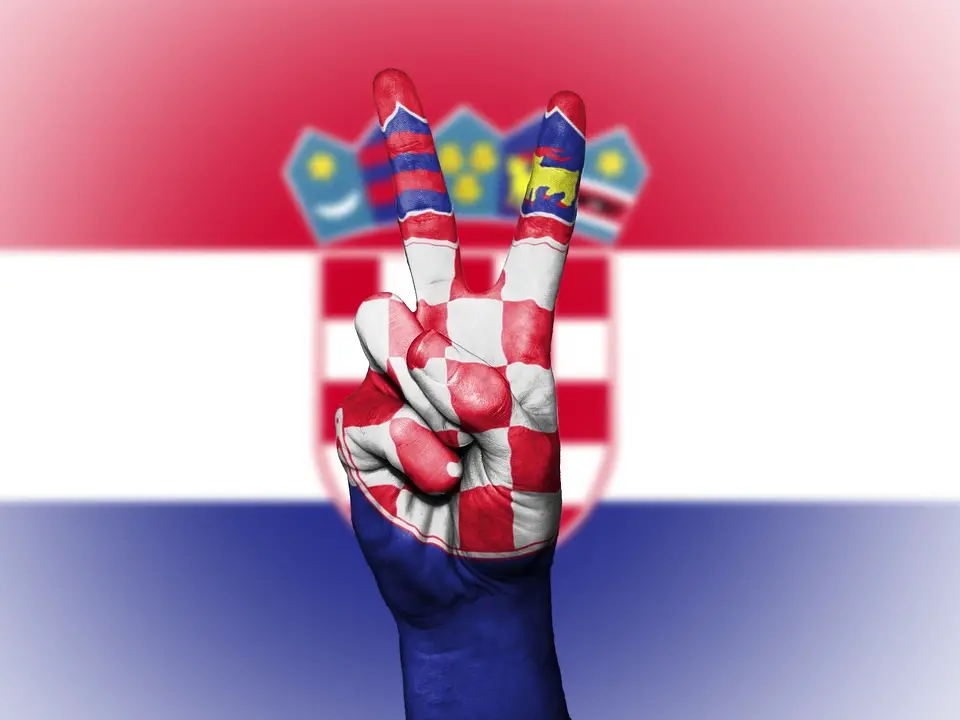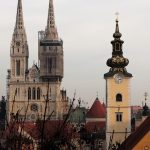As Poslovni Dnevnik/Karlo Vajdic writes, as we draw the line under the previous twelve months, we need to look at both the good and the bad and make assessments and plans for the future. Let’s go back in time to Croatia 2021 and try to highlight the events that stood out for the domestic economy, and also provide some sort of general assessment of the state of the Croatian economy last year.
Business is still less than free, it’s true to say this is somewhat less than what experienced in 2020, but costs continued to rise in 2021, and there is no sector that isn’t desperately craving a full recovery, although at least some of them are finding doing business easier than they did in 2020.
All this was reflected in the numbers. After the shocking events which dominated 2020, the domestic economy experienced a strong jump in the second and third quarters of last year. Gross domestic product (GDP) was more than promising. Back in mid-December 2021, the central bank published forecasts estimating that GDP growth in 2021 would total 10.8 percent.
The year before, in 2020, there was a decline of 8.1 percent, but for 2022, growth of around 4 percent is expected once again, so it seems that we will successfully return to our own average. The Crobex index jumped nearly 20 percent from the end of 2020, but turnover is lower. Throughout the whole of 2020, it amounted to 3.13 billion kuna, and last year, it totalled 2.54 billion.
In general, the question can be asked whether the economic year for Croatia 2021 should be compared with 2020 or with pre-pandemic 2019 in order to have a somewhat more realistic assessment of the state of the domestic economy? In the search for an answer to this question, let’s recall some of the key events that marked the economic year of 2021.
In business, the most high-profile event of the year was undoubtedly the merger of Rimac automobili and the legendary luxury vehicle manufacturer – Bugatti. The Bugatti Rimac company is jointly owned by the Rimac Group (55%) and the German giant Porsche (45%), and the company is headed by Livno-born entrepreneur Mate Rimac. The transaction turned into a true spectacle, and the company was even visited by the President of the European Commission (EC) Ursula von der Leyen during her stay in Zagreb back in July.
Political meddling with business didn’t stop at mere courteous visits, but the decision to allow Rimac’s company to build a new production and development campus in Sveta Nedelja on preferential terms raised a lot of hope for the public. This was followed by the allocation of 200 million euros from the European aid package for economic reconstruction to Rimac’s plan for the development of an autonomous vehicle and taxi service in Zagreb by the year 2024. Last year, Rimac continued to be plastered all of the newspapers, hailed a hero.
Another high-profile event in the same category was the sale of Zagreb’s Ledo frozen food factory and its subsidiaries. Fortenova (formerly Agrokor) announced in late September that the sale of Ledo to the British corporation Nomad Foods had been concluded, and the transaction itself was worth a massive 615 million euros. In addition to these two major transactions, last year was marked a number of smaller ones, including the sale of the Sunce hotel chain by entrepreneur Jako Andabak, who sold his 11 hotels to the Eagle Hills investment group. The sale of the Croatian manufacturer of glass pharmaceutical packaging, Piramida, to the Japanese conglomerate Nipro was also interesting.
The third high-profile event which marked last year came from the category of stock market listings, and that was the initial public offering of Span shares and their listing on the Zagreb Stock Exchange. The well-known domestic IT company eventually sold its shares at the maximum anticipated price, 175 kuna, and in the meantime their value jumped by an additional 33 percent.
Unlike Span’s listing on the stock exchange, the delisting of shares of PBZ, Dukat and Magma, once very happy to trade on the domestic market, went in the opposite direction While Span’s listing as a modern Croatian IT company is a laudable illustration of recent, much more digital times, Croatia 2021 didn’t disappoint in terms of events related to companies such as the proverbial anchor wrapped around the legs of the Croatian economy and of the local political scene.
The agonies experienced by the enfeebled shipyards (3. Maj and Uljanik) continued, and the troubles faced by the Brodarski Institute in Zagreb ended with a political decision.
With a payment of 45 million euros, the Slovak Tatravagonka took over production in Zagreb’s Gredelj and thus concluded the company’s long-term bankruptcy proceedings. Just before the end of the year, Djuro Djakovic got another chance to survive when the European Commission (EC) approved Croatia to grant Djakovic, which was restructuring support in the amount of 57.4 million euros.
The planned recapitalisation of Jadroplov failed, the Turkish corporation Yildrim showed interest in the Kutina-based Petrokemija, and the financial restructuring and recapitalisation of Dalekovod became even more complicated.
On the other hand, there was some good news from the blossoming domestic IT sector, traditionally ignored in political debates and games, probably because the vultures in politics don’t really understand it all that well. That’s for the best, it seems.
Vodnjan’s incredible Infobip announced their takeover of the American company Peerless Network and the Irish company Anam Technologies. That same Istrian company also announced its listing on the American stock exchange. At the end of the year, Konzum announced that it was starting to accept Bitcoin as a means of payment in its online stores, thus joining the Tifon fuel station chain, which enabled customers to do the same back at the beginning of the year.
Croatian enterprises and their leaders, despite the pandemic, haven’t completely lost heart. Nasice’s NEXE announced an investment of 123 million kuna in modernisation and new products, and BAT announced an investment of 200 million kuna in their factory in Rovinj. A similar amount of investments in capacity growth was announced by the Medjimurje-based packaging manufacturer Muraplast, and an investment of as much as 200 million euros in the construction of a laminate factory in Ogulin was also announced.
From last year’s high-profile personnel transfers, it is worth mentioning the arrival of former Minister Martina Dalic to the helm of Podravka, a position to which she was appointed at the beginning of February. In the very same sector, and at about the same time, Nenad Klepac was appointed head of Vindija, succeeding the late long-time owner Dragutin Drko. The first man of the Croatian Chamber of Commerce (HGK), Luka Burilovic, also won a third term at that institution back in October.
Some important news related to the Chamber of Commerce itself, and that was the much anticipated passing of a law abolishing the mandatory payment of membership fees for small businesses. Also related to the Croatian Chamber of Commerce is some news from the margins of economics and politics published just before the end of the year, that former longtime head of the chamber Nadan Vidosevic was found guilty of withdrawing money from the Croatian Chamber of Commerce and was sentenced to eight years in prison with the obligation to return 35.5 million kuna to the Chamber.
From the same marginal economic and political position, it is impossible not to mention the death of Milan Bandic, the former mayor and long-time master of Zagreb’s local economy, which accounts for a third of Croatia’s GDP. Bandic died prematurely and suddenly from what was then cited as a massive heart attack, although many questions surrounding his death remain, even from his widow, Vesna.
The new mayor, Tomislav Tomasevic of Mozemo! (We can!), and the new Zagreb administration have inherited the fight against Bandic’s legacy with that they claim to be a ”devastating situation” in terms of the capital’s finances. These issues were only heightened by the earthquake of March 2020.
The post-earthquake reconstruction of Zagreb and Banovina, which is still ongoing and moving at a shameful snail’s pace, is the subject of a story about the role of Croatian politics in the domestic economy, which has been repeated for the third consecutive decade. The fiasco with the reconstruction of Zagreb and Banovina is reminiscent of the reconstruction of almost the whole of Croatia after the war in the 1990s.
While back then, issues were due to bad politics and politicians, the opportunity was missed to rebuild the Croatian economy at the same time from the remnants of socialism and the remnants of war, now a similar story is being repeated, only with an indiscriminate natural disaster at play.
The difference is that two and a half decades ago, politicians were unable to create a framework in which to exploit Croatia’s potential, then expressed in the number of unemployed people that occasionally approached the level of 400,000, while today politicians are unable to create a framework in which to used the potential of financial assistance provided by the European Union. That said, Prime Minister Andrej Plenkovic and the rest of the political elite have repeatedly tried to gild the role of the Government in Croatia’s economic rust over the past year. Among them, we can single out two moments for this occasion.
The first is the development of the famous National Recovery and Resilience Plan. A comprehensive document of more than 1,200 pages was drafted by the government as a justification for withdrawing money from the EU’s Recovery and Resilience Mechanism. This is a document that acts as if no one has even ever read it in its entirety and is quickly being seen as just another pile of projects, wishes and empty phrases like countless other unimplemented strategies and plans written and shelved over the last twenty years.
The second bright moment for Croatian politics came back in mid-November when the credit rating agency Fitch Ratings announced that it had raised Croatia’s rating to BBB. Prime Minister Plenkovic and Minister of Finance Zdravko Maric hurried to welcome the good news in front of the public, which included the euphoric remark that this is the highest rating for Croatia in history.
What was left out of these celebrations was the fact that that rating was only one level higher than the BBB- rating that Croatia had when it first received a rating way back in 1997 – just two years after the Homeland War secured the nation its independence and saw the collapse of Yugoslavia. At this rate, we’ll reach the highest AAA category in a mere 192 years!
Is that why everything is still bleak and everyone is still busy lining cafes and complaining over three hour long coffees? No, Croatia 2021 also gave us some excellent news. For a start, the tourist season was more or less successful, unexpectedly and quite remarkably. Data from the Central Bureau of Statistics shows that from the beginning of July to the end of September last year there were 9.36 million tourist arrivals and that guests realised 57.3 million overnight stays. The arrival of the coronavirus vaccine had a lot to do with this, and visitors saw Croatia as an epidemiologically safe country, especially when compared with its Mediterranean competition.
Compared to the pre-pandemic year of 2019, this is a ten percent lower number of overnight stays and 16.5 percent fewer guests. For yet another pandemic-dominated year, Croatia 2021 did very, very well in this regard.
Export results for Croatia 2021 are even better. In the first ten months of last year, merchandise exports exceeded 15.1 billion euros. There is no doubt that by the end of the year that amount was exceeded and if there is one thing that can make us happy, it is the success of the exporters who suffered terribly as a result of the pandemic. These are mostly small and medium-sized companies that aren’t very widely heard about, but which, despite their policies, continue to invest in their capacities and modernisation in order to take full advantage of what it means to have EU membership.
This, in addition to the promising domestic IT sector, is making an apparently clean break from at least one part of the domestic economy, which is the tradition of inefficient, lethargic, economic mastodons who are lost in time and space, giving hope for a brighter future as we walk into 2022 and beyond.
For more, check out our dedicated lifestyle and business sections.









